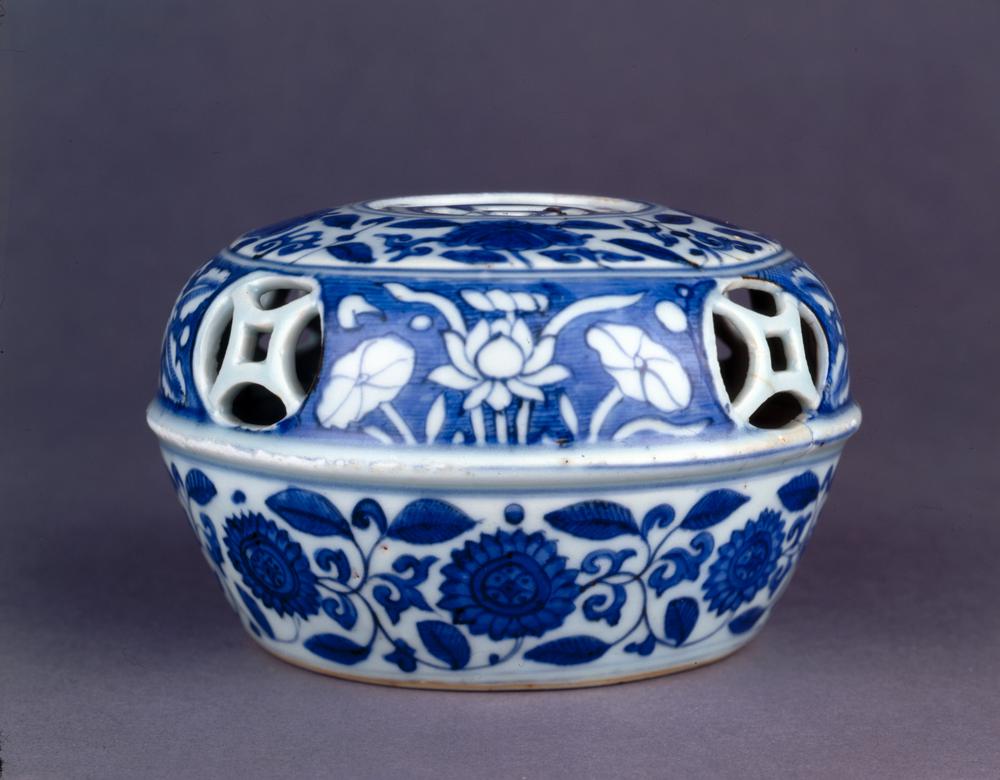Period:Five Dynasties and Ten Kingdoms Production date:901-950 (circa)
Materials:silk, 絲綢 (Chinese),
Technique:painted
Subjects:bodhisattva monk/nun cintamani beggar 菩薩 (Chinese) 供養人 (Chinese) 和尚/尼姑 (Chinese) 如意寶 (Chinese) 貧窮 (Chinese) child flaming jewel
Dimensions:Height: 55.50 centimetres Width: 39.80 centimetres
Description:
Painting of the Bodhisattva Kṣitigarbha shown as a monk, in patched robe, holding a khakkhara (beggar’s staff) and cintamani (flaming jewel). Unusually, he wears a hood, as a travelling monk would. The male donor at the bottom is identifiable as a young boy by his hairdo. Ink and colour on silk.
IMG
![图片[1]-painting; 繪畫(Chinese) BM-1919-0101-0.4-China Archive](https://chinaarchive.net/Five Dynasties and Ten Kingdoms/Paintings/mid_00321526_001.jpg)
![图片[2]-painting; 繪畫(Chinese) BM-1919-0101-0.4-China Archive](https://chinaarchive.net/Five Dynasties and Ten Kingdoms/Paintings/mid_00264433_001.jpg)
![图片[3]-painting; 繪畫(Chinese) BM-1919-0101-0.4-China Archive](https://chinaarchive.net/Five Dynasties and Ten Kingdoms/Paintings/mid_RFC391.jpg)
Comments:EnglishFrom Whitfield 1983:Certain points, both the small scale of the painting and the delicacy with which it was painted, and especially the use of pink colouring for the face and hands, seem to link this painting with the Avalokitesvara of the preceding entry (Pl. 7). Therefore, although it bears no inscription it seems quite likely to date from the beginning of the tenth century. This accords well with the growing popularity of Ksitigarbha at that time, attested by other paintings showing the Bodhisattva with the Ten Kings of the Underworld (see notes to Pls. 22-24).Ksitigarbha is shown seated, holding the khakkhara, or staff, in his right hand and a cintamani, or flaming jewel, in his left. These are his usual attributes. Here at Dunhuang this painting is representative of the hooded Ksitigarbha, where the Bodhisattva, who as usual wears a monk’s patched robe, is seen as a traveling monk, using his cape to cover his head. This iconographical type is unusual, since it has been found only at Dunhuang and subsequently in Korean paintings. It is not found at all in Buddhist paintings in Japan. The painting still retains its border of pale greenish blue silk. ChineseFrom Whitfield 1983:同樣是小幅的作品,優美的畫風,特別是臉和手部的粉色的運用等若干處,都與上一圖(圖7)的觀世音菩薩像有聯繫,雖然沒有題記,但從這些地方可以判斷此畫大約爲10世紀初的作品。這種推斷也符合當時敦煌地區地藏信仰盛行的事實,而且其它的畫像,如伴隨冥府十王的《地藏十王圖》也證明了這一點(參照圖22~24的解說)。本圖中的地藏菩薩右手執錫杖,左手持火焰寶珠而坐,這些持物都是地藏菩薩常見的象徵物,這幅畫是敦煌畫中戴兜帽的地藏菩薩的代表,這些菩薩像一般都穿著袈裟,頭上戴著兜帽,看起來是行僧。這種戴兜帽的地藏菩薩並不常見,只見於敦煌畫及稍晚于敦煌的高麗佛畫中,日本佛畫中完全沒有。該繪畫的偏淡綠的青色絲邊仍然保存完好。
Materials:silk, 絲綢 (Chinese),
Technique:painted
Subjects:bodhisattva monk/nun cintamani beggar 菩薩 (Chinese) 供養人 (Chinese) 和尚/尼姑 (Chinese) 如意寶 (Chinese) 貧窮 (Chinese) child flaming jewel
Dimensions:Height: 55.50 centimetres Width: 39.80 centimetres
Description:
Painting of the Bodhisattva Kṣitigarbha shown as a monk, in patched robe, holding a khakkhara (beggar’s staff) and cintamani (flaming jewel). Unusually, he wears a hood, as a travelling monk would. The male donor at the bottom is identifiable as a young boy by his hairdo. Ink and colour on silk.
IMG
![图片[1]-painting; 繪畫(Chinese) BM-1919-0101-0.4-China Archive](https://chinaarchive.net/Five Dynasties and Ten Kingdoms/Paintings/mid_00321526_001.jpg)
![图片[2]-painting; 繪畫(Chinese) BM-1919-0101-0.4-China Archive](https://chinaarchive.net/Five Dynasties and Ten Kingdoms/Paintings/mid_00264433_001.jpg)
![图片[3]-painting; 繪畫(Chinese) BM-1919-0101-0.4-China Archive](https://chinaarchive.net/Five Dynasties and Ten Kingdoms/Paintings/mid_RFC391.jpg)
Comments:EnglishFrom Whitfield 1983:Certain points, both the small scale of the painting and the delicacy with which it was painted, and especially the use of pink colouring for the face and hands, seem to link this painting with the Avalokitesvara of the preceding entry (Pl. 7). Therefore, although it bears no inscription it seems quite likely to date from the beginning of the tenth century. This accords well with the growing popularity of Ksitigarbha at that time, attested by other paintings showing the Bodhisattva with the Ten Kings of the Underworld (see notes to Pls. 22-24).Ksitigarbha is shown seated, holding the khakkhara, or staff, in his right hand and a cintamani, or flaming jewel, in his left. These are his usual attributes. Here at Dunhuang this painting is representative of the hooded Ksitigarbha, where the Bodhisattva, who as usual wears a monk’s patched robe, is seen as a traveling monk, using his cape to cover his head. This iconographical type is unusual, since it has been found only at Dunhuang and subsequently in Korean paintings. It is not found at all in Buddhist paintings in Japan. The painting still retains its border of pale greenish blue silk. ChineseFrom Whitfield 1983:同樣是小幅的作品,優美的畫風,特別是臉和手部的粉色的運用等若干處,都與上一圖(圖7)的觀世音菩薩像有聯繫,雖然沒有題記,但從這些地方可以判斷此畫大約爲10世紀初的作品。這種推斷也符合當時敦煌地區地藏信仰盛行的事實,而且其它的畫像,如伴隨冥府十王的《地藏十王圖》也證明了這一點(參照圖22~24的解說)。本圖中的地藏菩薩右手執錫杖,左手持火焰寶珠而坐,這些持物都是地藏菩薩常見的象徵物,這幅畫是敦煌畫中戴兜帽的地藏菩薩的代表,這些菩薩像一般都穿著袈裟,頭上戴著兜帽,看起來是行僧。這種戴兜帽的地藏菩薩並不常見,只見於敦煌畫及稍晚于敦煌的高麗佛畫中,日本佛畫中完全沒有。該繪畫的偏淡綠的青色絲邊仍然保存完好。
© Copyright
The copyright of the article belongs to the author, please keep the original link for reprinting.
THE END
![[Qing Dynasty] British female painter—Elizabeth Keith, using woodblock prints to record China from the late Qing Dynasty to the early Republic of China—1915-China Archive](https://chinaarchive.net/wp-content/uploads/2022/11/image-191x300.png)




